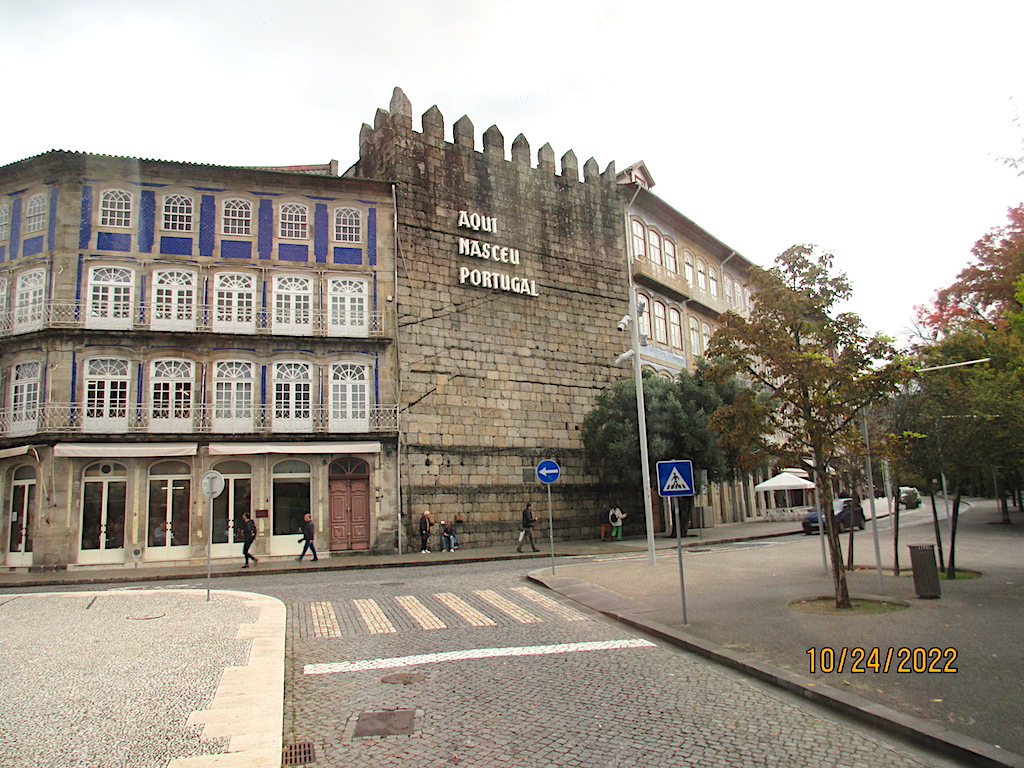
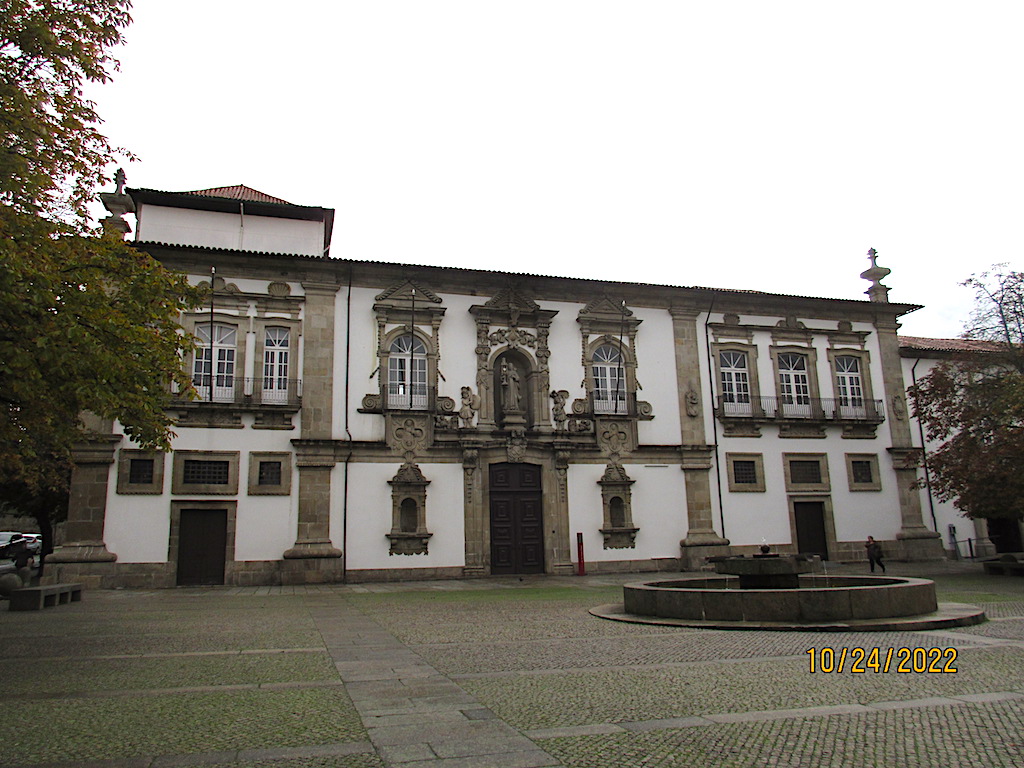

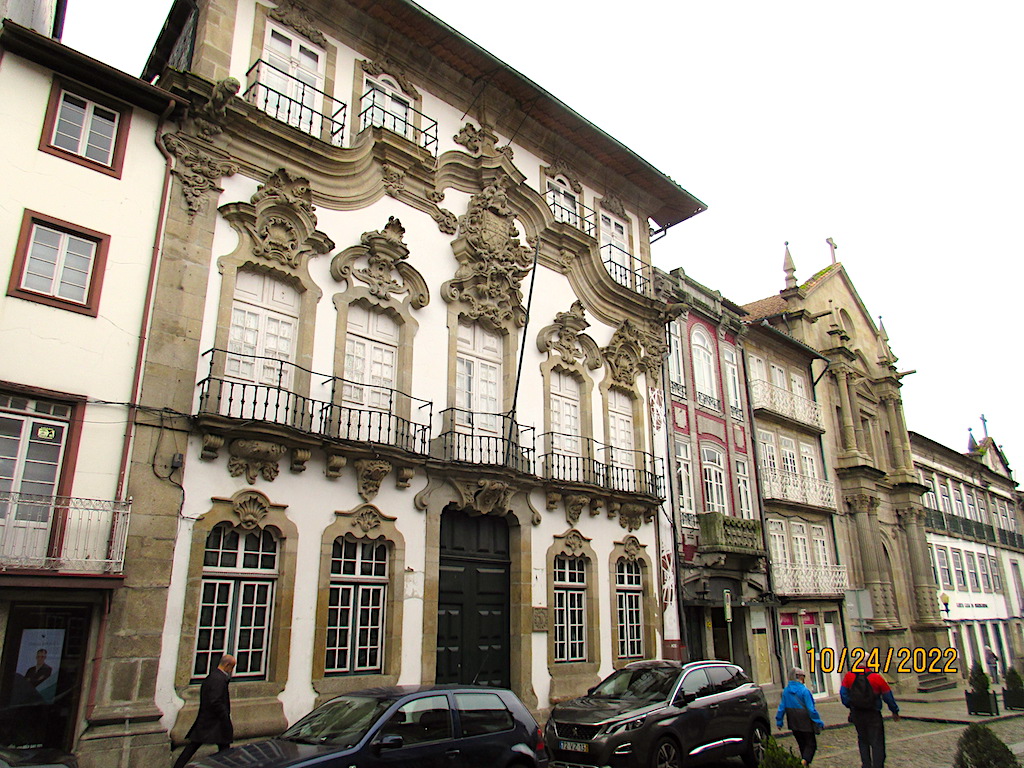

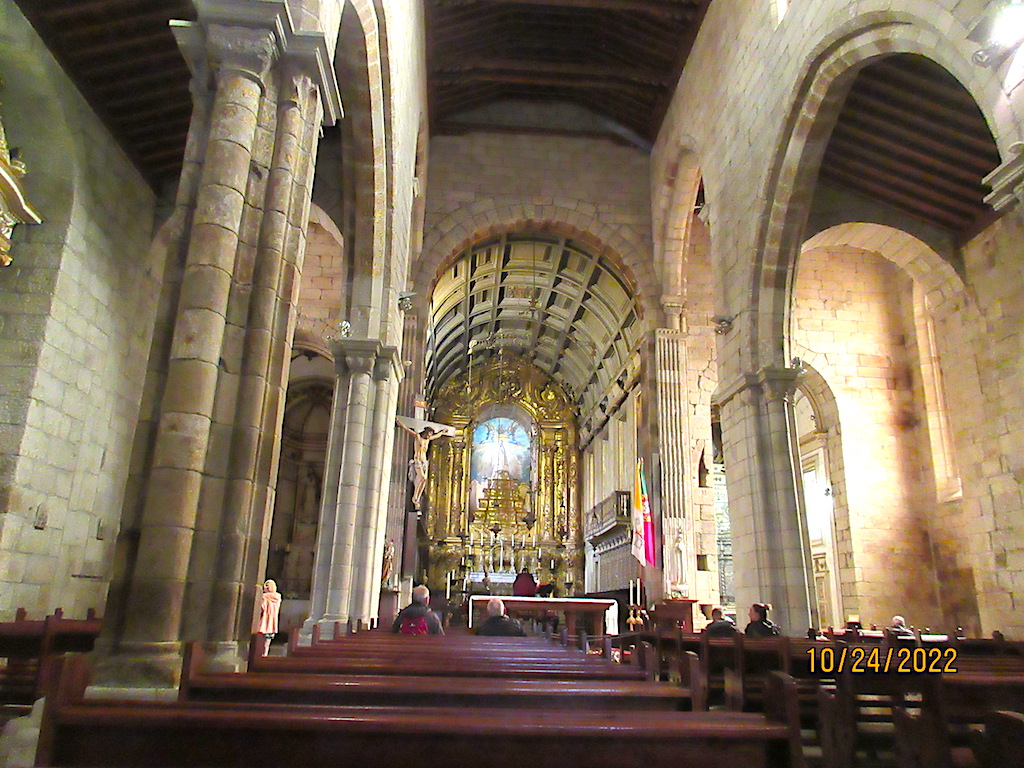
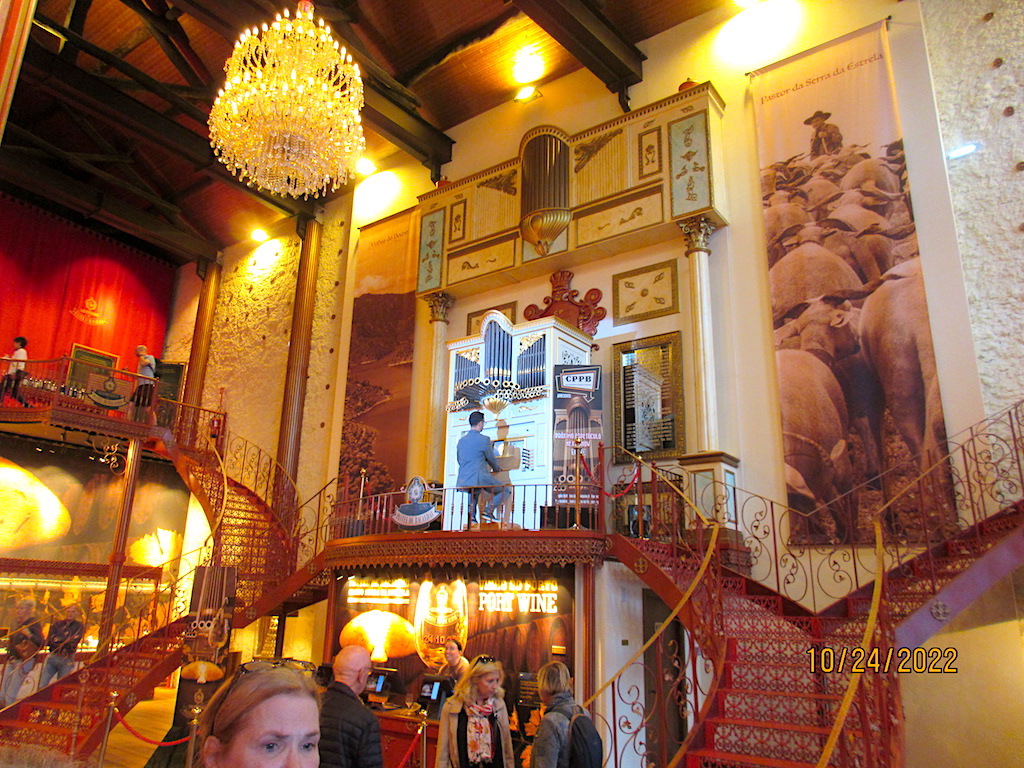
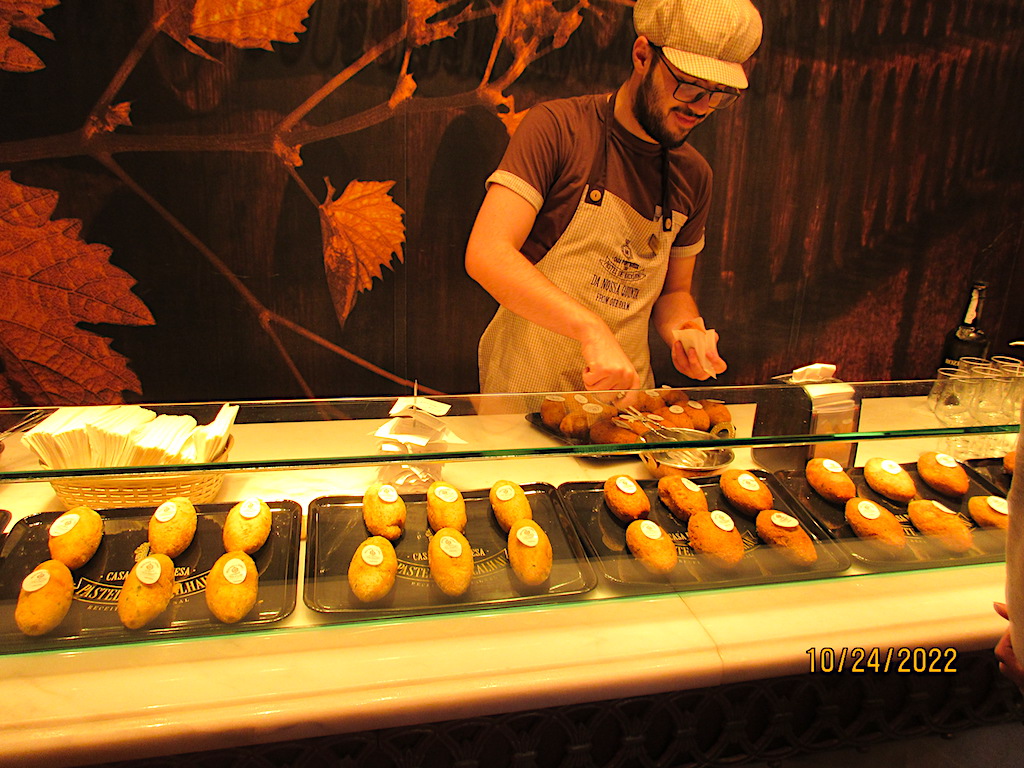
On this morning we had the opportunity to visit a town about an hour’s drive northeast of Porto by the name of Guimaraes. This historic town center has been listed as a UNESCO World Heritage Site in recognition of its well preserved and authentic example of the evolution of a medieval settlement into a modern town. The population of the city is about 150,000 and was originally settled about in the 9th century. It is often referred to as the “birthplace of Portugal” because it is believed that Portugal’s first King, Afonso Henriques, was born here.
We experienced a bit of rain during our visit, otherwise the weather was mostly cloudy and slightly cool. We toured the historic old walled city and its rustic cobblestoned streets with our guide. Most of the buildings are very old and in differing states of disrepair. Some abandoned, some restored and many showing their age. Several large churches are located in the old city with their bell towers, ornate altars, paintings and artifacts. Cafes line the public squares for people to stop and enjoy a bite to eat and a snack or a full meal. A few souvenir shops sell items like colorful tiles and ceramics, fine filigree jewelry and locally made cork and linen products.
Lunch was back onboard the ship with the afternoon at leisure in Porto. We took this opportunity to have a little nap after the long week of activities onboard and to begin preparing for our trip to Lisbon early the next morning.
Others headed several miles east of Porto’s city center to the area called Gondomar which is well known for its Portuguese filigree jewelry. The exact origin of the jewelry is unknown, but it is believed to date back to around 2000 BC, with Phoenician origins. The technique consists in molding metal into very fine threads, mainly gold alloy, and then twisted two-by-two and then flattened. The threads are as thin as a hair strand and the twisting gives them greater resistance allowing them to be bent and rolled without breaking. Expert artisans work these very fine threads into delicate looking brooches, necklaces, bracelets, earrings and rings.
Several of us joined the ships concierge, Lidia, on a short walk to a local café to taste a local specialty, the fish cake. The fish cakes are made of cod with a local cheese from the north of Portugal inside and the outside has a slight amount of breading. The fish cakes are served warm with a glass of cold white port wine. The Café where they sell the fish cakes had an organist playing a vintage pipe organ to attract people to the shop.
We then went to a local bar where folks tried a local beer called dirty beer where they add a little local wine to the beer. They also have what they call the ladies drink, dirty beer with red grenadine syrup which makes the beer red and much sweeter. Not any better than regular beer to me.
